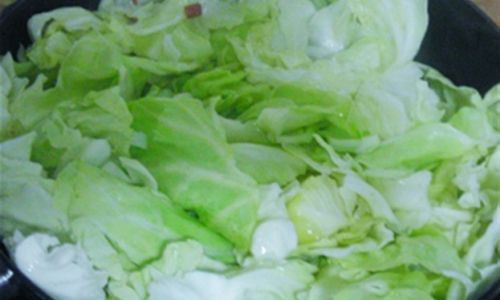Table of content
Cabbage, a humble and often overlooked vegetable, deserves a place of honor in your kitchen. Whether you’re a seasoned home cook or a novice exploring new flavors, learning how to cook cabbage properly can transform this leafy green into a star ingredient. Often dismissed as bland or boring, cabbage boasts a mild, slightly sweet taste that pairs beautifully with bold seasonings, aromatics, and cooking techniques. From crispy stir-fries to tender braises, this versatile vegetable adapts to countless preparations. In this comprehensive guide, we’ll explore the best ways to cook cabbage, ensuring it’s tender, flavorful, and anything but ordinary.
Understanding Cabbage: Types and Selection
Before diving into recipes, it’s essential to understand the different varieties of cabbage. The most common types include green cabbage, red cabbage, Napa cabbage, and Savoy cabbage. Each has a slightly different texture and flavor profile:
- Green cabbage: Crisp and slightly peppery, ideal for slaws, stir-fries, and soups.
- Red cabbage: Earthy and vibrant, perfect for salads and pickling.
- Napa cabbage: Delicate and sweet, often used in Asian dishes like kimchi.
- Savoy cabbage: Tender and ruffled, great for wraps and light sautés.
When selecting cabbage, choose heads that feel firm and heavy for their size, with crisp, unblemished leaves. Avoid wilted or bruised specimens. Store cabbage in the refrigerator’s crisper drawer, wrapped in plastic, for up to two weeks.
Cooking Methods That Shine
The key to delicious cabbage lies in the cooking technique. Overcooking can turn it mushy and release sulfurous odors, while undercooking leaves it too crunchy. Here are the best methods to achieve perfection:
Sautéing: Quick and Caramelized
Sautéing cabbage in a hot pan with fat (butter, oil, or bacon grease) and aromatics like garlic or onions creates a dish with depth and sweetness. The high heat caramelizes the natural sugars in the cabbage, resulting in tender, golden-brown leaves.

Recipe: Garlic Butter Sautéed Cabbage
Ingredients:
- 1 medium green cabbage, cored and thinly sliced
- 3 tbsp unsalted butter
- 4 garlic cloves, minced
- 1 tsp red pepper flakes (optional)
- Salt and black pepper to taste
- 2 tbsp fresh parsley, chopped
Instructions:
- Heat the butter in a large skillet over medium heat. Add the garlic and red pepper flakes, sautéing for 1 minute until fragrant.
- Add the cabbage, stirring to coat it in the butter. Spread it into an even layer and let it cook undisturbed for 4–5 minutes to caramelize.
- Stir, then reduce heat to low, cover, and cook for 10–15 minutes, stirring occasionally, until tender.
- Season with salt and pepper, garnish with parsley, and serve.
Roasting: Crispy and Charred
Roasting cabbage transforms it into a crispy, caramelized delight. Slicing it into wedges or “steaks” and roasting at high heat concentrates its natural flavors.
Recipe: Roasted Cabbage Steaks with Parmesan
Ingredients:
- 1 large green cabbage
- 3 tbsp olive oil
- 1 tsp smoked paprika
- 1/2 cup grated Parmesan cheese
- Salt and black pepper to taste
- Fresh thyme leaves for garnish
Instructions:
- Preheat the oven to 425°F (220°C). Cut the cabbage into 1-inch-thick steaks, keeping the core intact to hold them together.
- Brush both sides with olive oil, season with smoked paprika, salt, and pepper.
- Place on a baking sheet and roast for 20 minutes. Flip, sprinkle with Parmesan, and roast for another 15–20 minutes until golden and crispy.
- Garnish with thyme and serve hot.
Stir-Frying: Vibrant and Quick
Stir-frying cabbage preserves its crunch while infusing it with savory flavors. Pair it with ginger, soy sauce, and a touch of vinegar for an Asian-inspired dish.

Recipe: Spicy Cabbage Stir-Fry
Ingredients:
- 1/2 head Napa cabbage, thinly sliced
- 1 tbsp vegetable oil
- 2 tbsp fresh ginger, minced
- 3 garlic cloves, sliced
- 1 red chili, thinly sliced
- 2 tbsp soy sauce
- 1 tbsp rice vinegar
- 1 tsp sesame oil
- Toasted sesame seeds for garnish
Instructions:
- Heat the vegetable oil in a wok over high heat. Add ginger, garlic, and chili, stir-frying for 30 seconds.
- Toss in the cabbage and stir-fry for 3–4 minutes until wilted but still crisp.
- Drizzle with soy sauce, vinegar, and sesame oil. Toss to combine.
- Serve hot, garnished with sesame seeds.
Braising: Tender and Rich
Braising cabbage in broth or wine with aromatics like onions and herbs results in a meltingly tender side dish. This method is perfect for colder months.
Recipe: Braised Red Cabbage with Apples
Ingredients:
- 1 small red cabbage, shredded
- 1 large apple, peeled and diced
- 1 medium onion, thinly sliced
- 2 tbsp butter
- 1/2 cup red wine (or apple cider)
- 2 tbsp brown sugar
- 1 tbsp balsamic vinegar
- 1 cinnamon stick
- Salt and pepper to taste
Instructions:
- Melt the butter in a large pot. Add the onion and apple, sautéing until softened (5 minutes).
- Stir in the cabbage, red wine, brown sugar, vinegar, and cinnamon stick. Bring to a simmer.
- Cover and cook over low heat for 30–40 minutes, stirring occasionally, until tender.
- Remove the cinnamon stick, season, and serve.
Fermenting: Tangy and Probiotic-Rich
Fermented cabbage, such as sauerkraut or kimchi, offers a tangy, gut-healthy twist. While time-consuming, the process is rewarding.

Recipe: Homemade Sauerkraut
Ingredients:
- 1 medium green cabbage (about 3 lbs)
- 1 tbsp sea salt
- 1 tsp caraway seeds (optional)
Instructions:
- Remove the outer leaves of the cabbage, then shred it finely.
- In a large bowl, massage the cabbage with salt for 5 minutes until juicy.
- Mix in caraway seeds, then pack tightly into a sterilized jar, pressing down to submerge in brine.
- Cover with a clean cloth and secure with a rubber band. Ferment at room temperature for 3–10 days, burping daily to release gas.
- Once tangy, refrigerate and enjoy within 3 months.
Tips for Perfect Cabbage Every Time
- Avoid Overcooking: Cabbage turns mushy quickly. Test for doneness by piercing with a fork—it should yield easily but retain some structure.
- Enhance Flavor with Acid: A splash of vinegar, lemon juice, or citrus brightens cabbage’s earthy notes.
- Balance Bitterness: Red cabbage can be bitter; counteract it with sweeteners like honey, apples, or brown sugar.
- Use High-Quality Fat: Butter, bacon fat, or olive oil add richness and prevent stickiness during cooking.
- Experiment with Spices: Caraway, cumin, mustard seeds, or smoked paprika pair wonderfully with cabbage’s mild taste.
Health Benefits of Cabbage
Beyond its culinary versatility, cabbage is a nutritional powerhouse:
- Rich in Fiber: Aids digestion and promotes gut health.
- Vitamin C Boost: One cup provides 85% of your daily needs.
- Antioxidants: Red cabbage contains anthocyanins, which reduce inflammation.
- Low in Calories: A 1-cup serving has just 22 calories, making it ideal for weight management.
Pairing Suggestions
Cabbage’s adaptability makes it a natural companion to various proteins and grains:
- Pork: Slow-cooked pork shoulder with braised cabbage.
- Fish: Seared salmon over sautéed cabbage and lentils.
- Grains: Cabbage slaw with quinoa and toasted almonds.
- Cheese: Roasted cabbage steaks topped with melted Gruyère.
Conclusion
Cabbage is far from boring—it’s a canvas for creativity in the kitchen. Whether you prefer it crispy, tender, tangy, or caramelized, mastering these techniques will elevate your meals. Experiment with global flavors, from Korean kimchi to German-style braises, and discover why chefs and home cooks alike adore this underrated vegetable. With the right approach, cabbage can steal the show at any table. So next time you bring home a head, remember: simplicity is key, but a dash of innovation will make it unforgettable.





0 comments